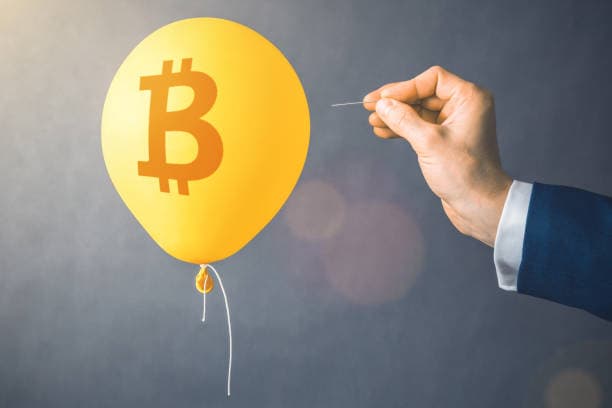Bitcoin Trading Hours and Rules|Instant Facts
Hello everyone, I'm Mike. Today we're going to talk about Bitcoin trading hours and rules, which are very important for everyone who wants to trade cryptocurrencies. Whether you're a newbie or an experienced trader, understanding how Bitcoin trading works will help you better capitalize on market opportunities. This article will explain in detail the trading hours and rules of Bitcoin trading, as well as some tips to help you avoid common mistakes and improve your trading efficiency. Whether you want to operate on an exchange or participate in a rebate program, you can benefit from it.

Basic Concepts of Bitcoin Trading Hours
As a global cryptocurrency, Bitcoin, unlike the traditional stock market, is not restricted to specific trading hours or holidays. Bitcoin's trading hours are basically 24/7. This is because Bitcoin is based on blockchain technology, which operates on a distributed basis, with a global network of traders available at all times. Therefore, no matter what time zone you are in, day or night, you can trade Bitcoin.
Bitcoin trading also doesn't have specific opening and closing times like the traditional stock market. It is possible to initiate a trade at any time, however, depending on the exchange, there may be some slight system maintenance or upgrade times when users will not be able to trade, so it is important to keep an eye on the exchange's announcements.
Bitcoin Trading Rules: How to Start Trading
Before you start trading Bitcoin, it is important to understand some basic trading rules. Using a Bitcoin exchange is the main way to trade Bitcoin. You will need to register for an exchange account and complete a KYC (Key Yield Certificate) before you can buy or sell Bitcoin.
The basic unit of Bitcoin trading is the "BTC" (Bitcoin). Depending on the current market price, you can choose to buy Bitcoin in fiat currency (e.g., Taiwan Dollars, US Dollars, etc.) or sell Bitcoin in exchange for other currencies. Most exchanges offer both spot trading and leveraged trading, where spot trading involves buying or selling Bitcoin in fiat currency, while leveraged trading involves highly leveraged trading with borrowed funds, which is riskier and suitable for experienced investors.
When trading, you will come across some basic types of orders, such as Limit Orders, Stop Loss Orders, etc. Limit Orders are orders that set a specific price and are automatically executed when the market price reaches that price. Limit orders are orders that set a specific price and are automatically executed when the market price reaches that price, while stop-loss orders are a protection strategy whereby the system automatically sells when the market price falls to a certain level, preventing losses from escalating.
Differences in the trading rules of the exchanges
There may be some slight differences in rules from exchange to exchange, so it is important to pay extra attention when choosing an exchange. For example, some exchanges offer margin trading, allowing users to trade on a larger scale with less capital, while others focus more on the fee structure, with some platforms offering lower fees for longer term trading.
How to choose the right exchange
Choosing the right exchange is crucial for Bitcoin trading. You need to consider the security of the exchange. Many exchanges have been hit by hackers in the past, resulting in the loss of user funds. Therefore, choosing a secure exchange and turning on security measures such as 2FA is an essential step in securing your funds.

The liquidity of the exchange is also a key concern. More liquid exchanges mean more buyers and sellers in the market, smoother transactions and relatively less price volatility. You can choose from well-known international exchanges such as Binance, Coinbase, Kraken, etc. These exchanges are generally more liquid and offer a wide range of trading tools and models.
Another thing to keep in mind is the fee structure of the exchanges. Trading fees and withdrawal fees vary greatly from exchange to exchange. If you are a frequent trader, choosing an exchange with lower fees can help reduce your trading costs. Some exchanges, such as OKX, also offer rebate programs, which is a great benefit for long-term users.
Risk Management in Bitcoin Trading
Risk management is very important when trading Bitcoin. Due to the high price volatility of Bitcoin, investors need to set up a risk control strategy when operating. Setting a stop-loss point is one of the basic risk management strategies. Stop-loss points can help you minimize your losses in advance when the market price fluctuates dramatically.
Proper capital allocation is also very important. Many experienced traders recommend diversifying your capital across different cryptocurrencies or asset classes to reduce the risk associated with fluctuations in a single asset. Of course, traders should also set the size of their trades according to their own risk tolerance, and should not blindly pursue high returns and ignore the risks.
Risks when using leverage
If you choose to leverage (i.e. borrow money to trade), you must be extremely careful. Leverage can magnify gains, but it can also magnify losses. In highly leveraged trading, once the market price fluctuates drastically, the mandatory closeout line may be reached quickly, resulting in a loss of capital. It is recommended that you fully understand the risks involved and set up stop-loss protection before using leverage trading.
Frequently Asked Questions Q&A
Q1: Are there different trading hours for Bitcoin?
A1: The Bitcoin exchange market is open 24 hours a day, anytime you want to buy or sell, this is due to the nature of the Bitcoin blockchain operation. This is due to the nature of the Bitcoin blockchain. However, some exchanges may temporarily suspend trading during system maintenance.
Q2: How do I choose the right exchange for me?
A2: You can choose an exchange based on its security, liquidity, fees and whether it offers a commission program. For newbies, it is ideal to choose an exchange that is easy to use and has a high level of security.
Q3: Do I need to place a Stop Loss Order?
A3: If you are a long term trader or an investor who does not have strong risk control, it is very helpful to have a Stop Loss Order. It can help you to exit a trade in time when the market is too volatile and avoid bigger losses.














